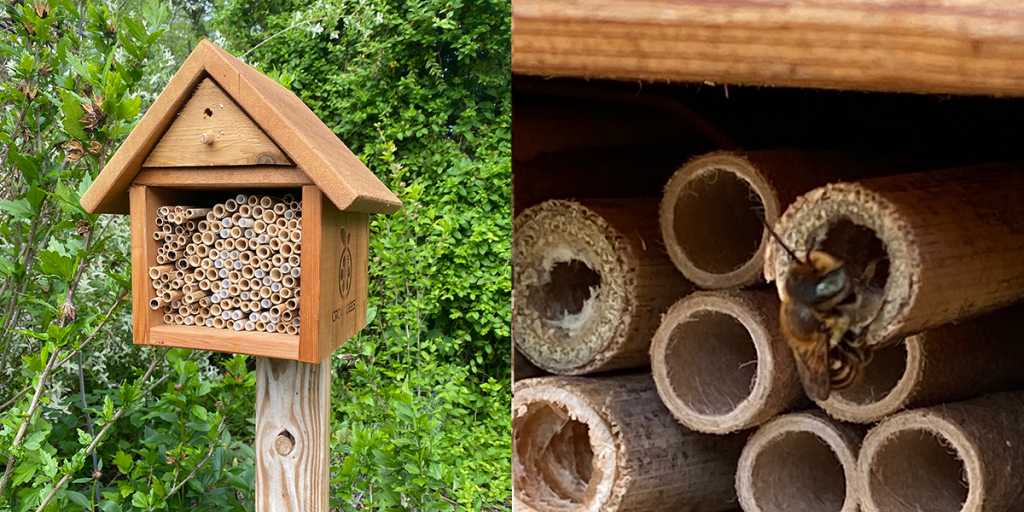
Most people are familiar with the Honey Bee and it's beneficial impact on the environment and our food supply. But honey bees are not native to the United States. Honey bees were brought to the US in the 1622! Honey bees are great for farmers because they can be moved from place to place to pollinate currently blooming crops and have the added benefit of producing honey that can be sold. That said - they have their issues. There is a lot of maintinance that goes along with having honey bees. First, they have to be tended to...a lot. They are not a "set it and forget it" type project. Queens have to be checked on to make sure they're laying enough eggs and managing the colony properly. Mite levels have to be inspected and treated. Hives can be robbed by other insects incuding bees, wasps, honets, and ants. Hive can be invaded by beetles. Disesase such as foul brood need to be inspeacted for and infected hives throughly destroyed. (It's a very contagous disease)
For these reasons, increasing native bee populations is probably more important to our environment and food supply than the honey bee. Native bees are less maintenance and pollinate more efficient than honey bees. They're also incredibly easy to keep and they don't sting! All you need are an appropriate shelter and a source of food! Most yards already have plenty of food, but planting flowering plants (especially those native to the region) is always helpful. (see our related article on bee friendly plants)
So what are native bees? There are two main types that will be discussed for the use of this article - the mason bee and the leafcutter bee. They go to work in that order. Mason bees emerges in early spring, while the leaf cutters come out in early summer. (of course we have other bees such as bumbles, carpenters, etc, but we will cover them in another article)

The Mason Bee is a solitary bee about half the size of a honey bee. The are friendly and efficient! The cute little bees are the first out on the scene in the spring. As a "bee advocate" you would keep their cocoons inside, refrigerated, until the temperatures reached a consistent day time temperature of about 50-55 degrees F (freezing at night is OK) Generally this is around March 1st, depending on your area. When the conditions are permitting, simply put their cocoons out in the bee shelter and then walk away! The main criteria for keeping mason bees is that they need a source of clay near their shelter. Mason bees lay their eggs in tubes and reeds. They divide the tunnel between eggs with a pad of clay. If a either a shelter with the correct size reeds, or moist clay is not available, mason bees will seek a new shelter.
